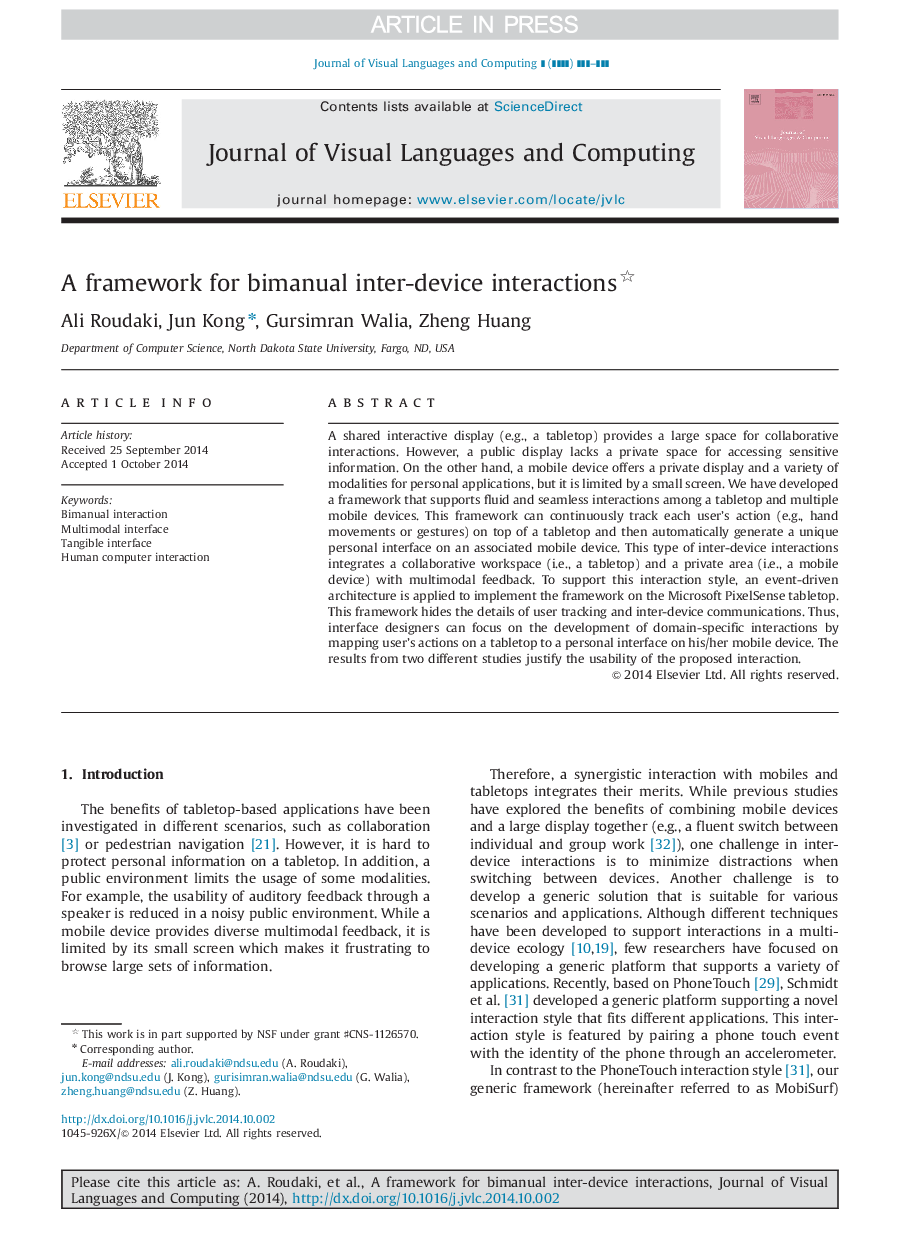| Article ID | Journal | Published Year | Pages | File Type |
|---|---|---|---|---|
| 10358792 | Journal of Visual Languages & Computing | 2014 | 11 Pages |
Abstract
A shared interactive display (e.g., a tabletop) provides a large space for collaborative interactions. However, a public display lacks a private space for accessing sensitive information. On the other hand, a mobile device offers a private display and a variety of modalities for personal applications, but it is limited by a small screen. We have developed a framework that supports fluid and seamless interactions among a tabletop and multiple mobile devices. This framework can continuously track each user's action (e.g., hand movements or gestures) on top of a tabletop and then automatically generate a unique personal interface on an associated mobile device. This type of inter-device interactions integrates a collaborative workspace (i.e., a tabletop) and a private area (i.e., a mobile device) with multimodal feedback. To support this interaction style, an event-driven architecture is applied to implement the framework on the Microsoft PixelSense tabletop. This framework hides the details of user tracking and inter-device communications. Thus, interface designers can focus on the development of domain-specific interactions by mapping user's actions on a tabletop to a personal interface on his/her mobile device. The results from two different studies justify the usability of the proposed interaction.
Related Topics
Physical Sciences and Engineering
Computer Science
Computer Science Applications
Authors
Ali Roudaki, Jun Kong, Gursimran Walia, Zheng Huang,
